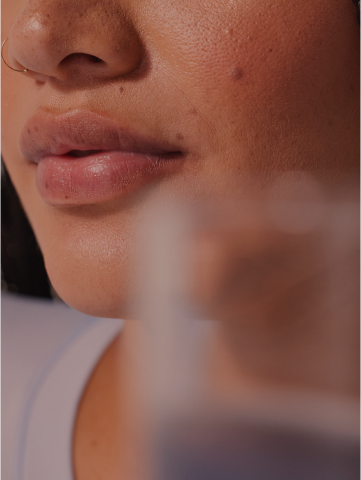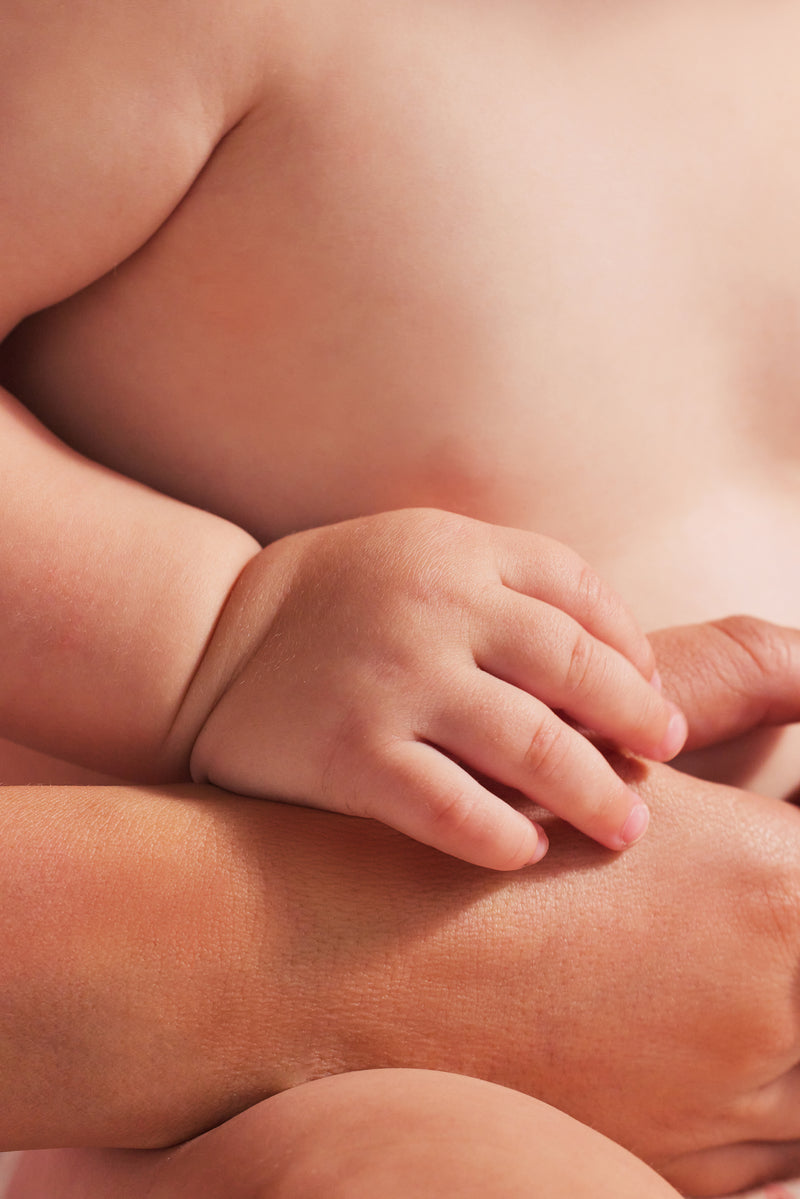Feeling that pregnancy fatigue? It’s totally normal – after all, you are growing a human and that is no easy task!
We suggest setting up a nighttime routine that you can stick to. Head to bed as early as possible, at the same time each night, and put all electronics out of reach. Read your favorite book or try meditating to transition into a relaxed mindset.
Sweet dreams! 💤
Feeling that pregnancy fatigue? It’s totally normal – after all, you are growing a human and that is no easy task!
We suggest setting up a nighttime routine that you can stick to. Head to bed as early as possible, at the same time each night, and put all electronics out of reach. Read your favorite book or try meditating to transition into a relaxed mindset.
Sweet dreams! 💤
There are four menstrual cycle phases that the body goes through to prepare for a possible pregnancy.
While each of the menstrual cycle phases differs in length from person-to-person, here's a breakdown of how it works 🔄
Menstrual Phase: The first of the menstrual cycle phases, and is when you get your period. When an egg from the previous cycle is not fertilized, estrogen and progesterone hormone levels decrease, and the lining of your uterus sheds. The length of your period is the length of your menstrual phase.
Follicular Phase: This phase overlaps with your menstrual phase as it begins on the first day of your period. When the hypothalamus signals the pituitary gland to release follicle-stimulating hormone (FSH), it tells the ovaries to produce follicles that contain immature eggs. As the healthiest follicle matures (the rest are reabsorbed by the body), it increases your estrogen levels. This causes the lining of your uterus to thicken, which allows an embryo to grow. The length will vary, but tends to range from 11 to 27 days.
Ovulation Phase: The ovulation phase typically lasts just 24 hours, and begins when your ovary releases a mature egg due to an increase in estrogen levels during the follicular phase. The egg then travels through the fallopian tube to the uterus, where it can be fertilized by sperm. If the mature egg is not fertilized, it will dissolve or die within 12 to 24 hours, and the uterine lining will shed.
Ovulation occurs in the middle of your menstrual cycle phases, meaning that if you have a 28-day cycle, it will occur near day 14.
Luteal phase: The luteal phase is the last of the menstrual cycle phases, and occurs after the egg has left the follicle. At this point, the corpus luteum (a completely normal cyst) forms on the ovary to support the uterus in developing a healthy fetus by producing estrogen and progesterone.
If the egg is fertilized, the corpus luteum will continue to release progesterone for about 12 weeks.
If the egg is not fertilized, the corpus luteum will break down about 10 days after the egg leaves the follicle and your body will shed the lining and the menstrual phase will begin.
There are four menstrual cycle phases that the body goes through to prepare for a possible pregnancy.
While each of the menstrual cycle phases differs in length from person-to-person, here's a breakdown of how it works 🔄
Menstrual Phase: The first of the menstrual cycle phases, and is when you get your period. When an egg from the previous cycle is not fertilized, estrogen and progesterone hormone levels decrease, and the lining of your uterus sheds. The length of your period is the length of your menstrual phase.
Follicular Phase: This phase overlaps with your menstrual phase as it begins on the first day of your period. When the hypothalamus signals the pituitary gland to release follicle-stimulating hormone (FSH), it tells the ovaries to produce follicles that contain immature eggs. As the healthiest follicle matures (the rest are reabsorbed by the body), it increases your estrogen levels. This causes the lining of your uterus to thicken, which allows an embryo to grow. The length will vary, but tends to range from 11 to 27 days.
Ovulation Phase: The ovulation phase typically lasts just 24 hours, and begins when your ovary releases a mature egg due to an increase in estrogen levels during the follicular phase. The egg then travels through the fallopian tube to the uterus, where it can be fertilized by sperm. If the mature egg is not fertilized, it will dissolve or die within 12 to 24 hours, and the uterine lining will shed.
Ovulation occurs in the middle of your menstrual cycle phases, meaning that if you have a 28-day cycle, it will occur near day 14.
Luteal phase: The luteal phase is the last of the menstrual cycle phases, and occurs after the egg has left the follicle. At this point, the corpus luteum (a completely normal cyst) forms on the ovary to support the uterus in developing a healthy fetus by producing estrogen and progesterone.
If the egg is fertilized, the corpus luteum will continue to release progesterone for about 12 weeks.
If the egg is not fertilized, the corpus luteum will break down about 10 days after the egg leaves the follicle and your body will shed the lining and the menstrual phase will begin.
There are four menstrual cycle phases that the body goes through to prepare for a possible pregnancy.
While each of the menstrual cycle phases differs in length from person-to-person, here's a breakdown of how it works 🔄
Menstrual Phase: The first of the menstrual cycle phases, and is when you get your period. When an egg from the previous cycle is not fertilized, estrogen and progesterone hormone levels decrease, and the lining of your uterus sheds. The length of your period is the length of your menstrual phase.
Follicular Phase: This phase overlaps with your menstrual phase as it begins on the first day of your period. When the hypothalamus signals the pituitary gland to release follicle-stimulating hormone (FSH), it tells the ovaries to produce follicles that contain immature eggs. As the healthiest follicle matures (the rest are reabsorbed by the body), it increases your estrogen levels. This causes the lining of your uterus to thicken, which allows an embryo to grow. The length will vary, but tends to range from 11 to 27 days.
Ovulation Phase: The ovulation phase typically lasts just 24 hours, and begins when your ovary releases a mature egg due to an increase in estrogen levels during the follicular phase. The egg then travels through the fallopian tube to the uterus, where it can be fertilized by sperm. If the mature egg is not fertilized, it will dissolve or die within 12 to 24 hours, and the uterine lining will shed.
Ovulation occurs in the middle of your menstrual cycle phases, meaning that if you have a 28-day cycle, it will occur near day 14.
Luteal phase: The luteal phase is the last of the menstrual cycle phases, and occurs after the egg has left the follicle. At this point, the corpus luteum (a completely normal cyst) forms on the ovary to support the uterus in developing a healthy fetus by producing estrogen and progesterone.
If the egg is fertilized, the corpus luteum will continue to release progesterone for about 12 weeks.
If the egg is not fertilized, the corpus luteum will break down about 10 days after the egg leaves the follicle and your body will shed the lining and the menstrual phase will begin.
There are four menstrual cycle phases that the body goes through to prepare for a possible pregnancy.
While each of the menstrual cycle phases differs in length from person-to-person, here's a breakdown of how it works 🔄
Menstrual Phase: The first of the menstrual cycle phases, and is when you get your period. When an egg from the previous cycle is not fertilized, estrogen and progesterone hormone levels decrease, and the lining of your uterus sheds. The length of your period is the length of your menstrual phase.
Follicular Phase: This phase overlaps with your menstrual phase as it begins on the first day of your period. When the hypothalamus signals the pituitary gland to release follicle-stimulating hormone (FSH), it tells the ovaries to produce follicles that contain immature eggs. As the healthiest follicle matures (the rest are reabsorbed by the body), it increases your estrogen levels. This causes the lining of your uterus to thicken, which allows an embryo to grow. The length will vary, but tends to range from 11 to 27 days.
Ovulation Phase: The ovulation phase typically lasts just 24 hours, and begins when your ovary releases a mature egg due to an increase in estrogen levels during the follicular phase. The egg then travels through the fallopian tube to the uterus, where it can be fertilized by sperm. If the mature egg is not fertilized, it will dissolve or die within 12 to 24 hours, and the uterine lining will shed.
Ovulation occurs in the middle of your menstrual cycle phases, meaning that if you have a 28-day cycle, it will occur near day 14.
Luteal phase: The luteal phase is the last of the menstrual cycle phases, and occurs after the egg has left the follicle. At this point, the corpus luteum (a completely normal cyst) forms on the ovary to support the uterus in developing a healthy fetus by producing estrogen and progesterone.
If the egg is fertilized, the corpus luteum will continue to release progesterone for about 12 weeks.
If the egg is not fertilized, the corpus luteum will break down about 10 days after the egg leaves the follicle and your body will shed the lining and the menstrual phase will begin.
There are four menstrual cycle phases that the body goes through to prepare for a possible pregnancy.
While each of the menstrual cycle phases differs in length from person-to-person, here's a breakdown of how it works 🔄
Menstrual Phase: The first of the menstrual cycle phases, and is when you get your period. When an egg from the previous cycle is not fertilized, estrogen and progesterone hormone levels decrease, and the lining of your uterus sheds. The length of your period is the length of your menstrual phase.
Follicular Phase: This phase overlaps with your menstrual phase as it begins on the first day of your period. When the hypothalamus signals the pituitary gland to release follicle-stimulating hormone (FSH), it tells the ovaries to produce follicles that contain immature eggs. As the healthiest follicle matures (the rest are reabsorbed by the body), it increases your estrogen levels. This causes the lining of your uterus to thicken, which allows an embryo to grow. The length will vary, but tends to range from 11 to 27 days.
Ovulation Phase: The ovulation phase typically lasts just 24 hours, and begins when your ovary releases a mature egg due to an increase in estrogen levels during the follicular phase. The egg then travels through the fallopian tube to the uterus, where it can be fertilized by sperm. If the mature egg is not fertilized, it will dissolve or die within 12 to 24 hours, and the uterine lining will shed.
Ovulation occurs in the middle of your menstrual cycle phases, meaning that if you have a 28-day cycle, it will occur near day 14.
Luteal phase: The luteal phase is the last of the menstrual cycle phases, and occurs after the egg has left the follicle. At this point, the corpus luteum (a completely normal cyst) forms on the ovary to support the uterus in developing a healthy fetus by producing estrogen and progesterone.
If the egg is fertilized, the corpus luteum will continue to release progesterone for about 12 weeks.
If the egg is not fertilized, the corpus luteum will break down about 10 days after the egg leaves the follicle and your body will shed the lining and the menstrual phase will begin.
At Premama, we’re here for every stage of your parenthood plan.
From trying to conceive with our Balance and Fertility Support supplements, to pregnancy with our Prenatal Vitamins, and postpartum with our Lactation Support supplement, we’ve got you covered.
Have you tried any of our products yet? Find us in stores at Walmart and available on Walmart.com if you need us! 🩷
*These statements have not been evaluated by the Food and Drug Administration. This product is not intended to diagnose, treat, cure or prevent any disease.













